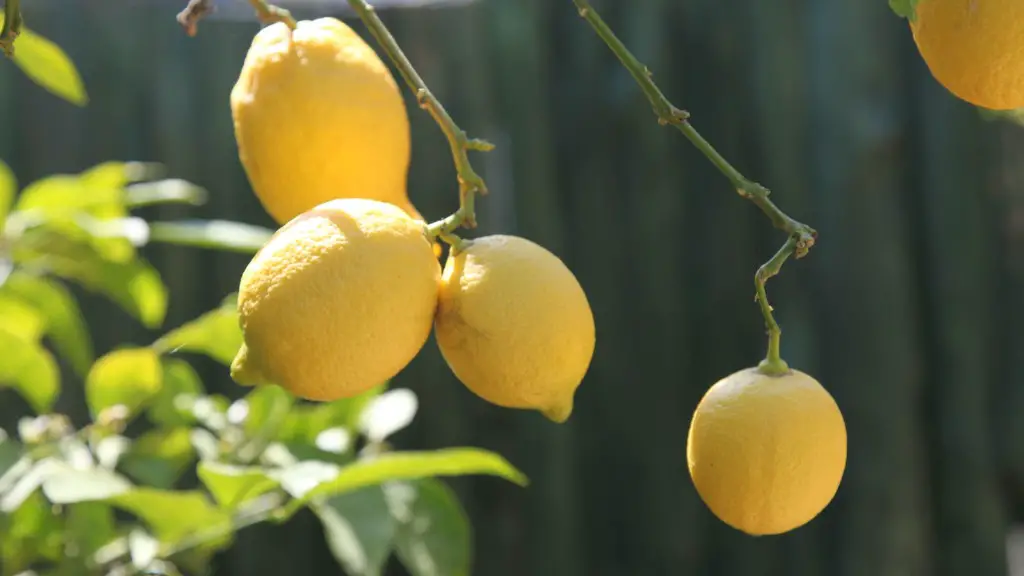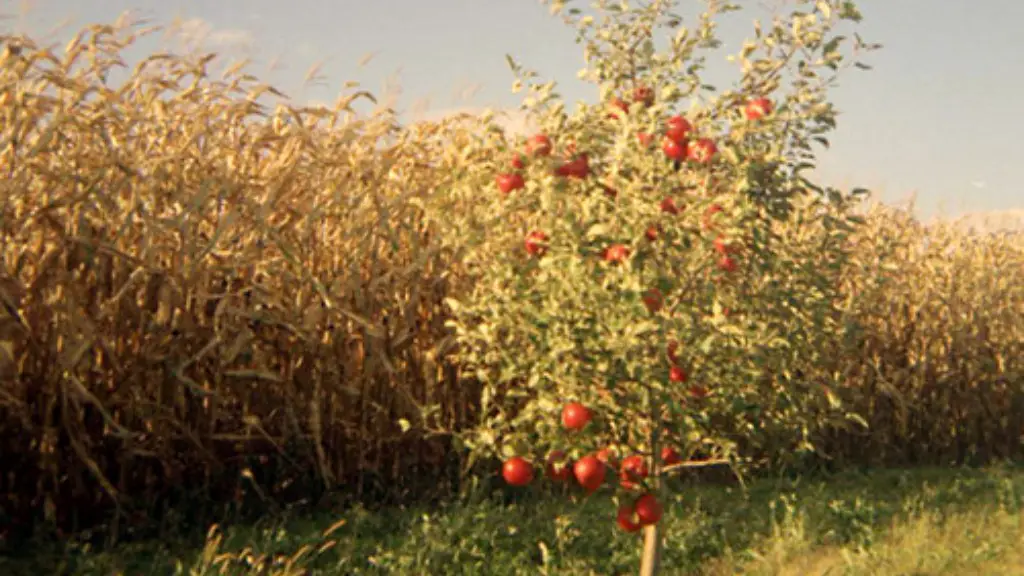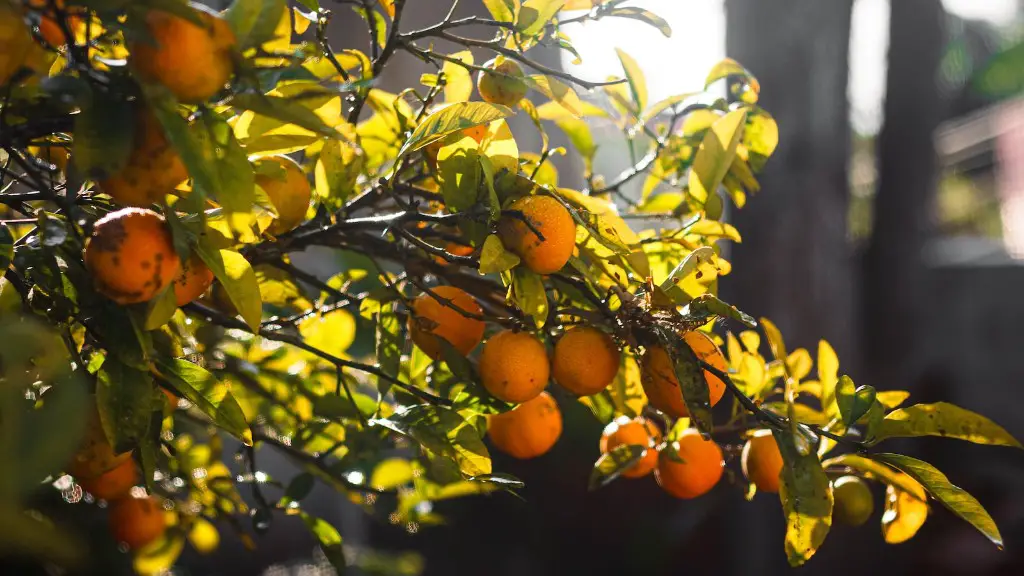Apple picking is an enjoyable and rewarding activity for many people, and it is an activity that needs to be done at just the right time to get the most enjoyment and benefit from the experience. Knowing when the best time is to pick apples off a tree is an important part of the process, and this article will give insight into this important factor.
In general, apple trees bear fruit in the fall, usually between late August and October, depending on the type of apple tree and the climate in which it is grown. To determine the right time to pick apples, the best thing to do is check with the orchard where they are grown and ask when they expect the apples to be ripe. Most orchards will let you know when they expect the apples to be ready for picking.
You can also inspect the apples on the tree to determine when they are ready for harvest. While you don’t want to pick them too early, you also want to avoid leaving them on the tree for too long, as they can become mushy and develop cracks. Look for apples with a rich, deep color and one that is slightly soft to the touch. At the same time, avoid the apples with a lot of bruises, as these could be rotten.
Additionally, the smell of the apples is another indication that they are ripe and ready for harvest. If the apple smells sweet and aromatic, then it is probably ready to pick.When the apples have reached their peak condition, they should also easily come off the branch when you give them a gentle tug. If they are still attached firmly, this could mean they are not yet ripe enough.
In conclusion, picking apples off a tree at the right time is essential in order to get the best tasting fruit. It is important to check with the orchard when they expect the apples to be ripe, as well as check them visually andby the smell to ensure they are ready.
What Are the Benefits of Picking Apples?
Picking apples from a tree is a fun and rewarding experience. There are numerous benefits to picking apples from a tree, from providing healthy snacks to creating lasting memories.
One of the primary benefits of picking apples from a tree is that the fruit is often fresher than what you find at the grocery store. Apples picked directly from the tree are often picked in peak ripeness for the best flavored fruit. This can also be an economical way to purchase large numbers of apples for canning or baking pies and other recipes.
In addition, picking apples is a good way to promote healthy habits. Not only is it a great excuse to get outside and enjoy nature, but it is also a way to do something active and get some light exercise. It’s also a great opportunity to bond with family members. Apple picking provides a fun and memorable experience that you can enjoy with friends, family, and even your own children.
Finally, picking your own apples is a great way to reconnect with nature and appreciate the bounty of the Earth. Eating locally-sourced and organic produce also has numerous health benefits, including higher nutrient content. Overall, picking apples from a tree is an enjoyable and beneficial activity that provides benefits to your health, wallet, and the environment.
What Type of Apples Can Be Picked From Trees?
The type of apples you can pick from trees will vary depending on the climate and the type of tree. Popular types of apples that people can commonly pick from trees include Granny Smith, Honeycrisp, Gala, Fuji, and Red Delicious. To find out what type of apple your tree produces, research is key. You can check online or consult with someone at your local garden center or your county extension office.
Additionally, some apples may require special care when harvesting. For example, apples such as Fuji and Honeycrisp need to be treated gently, as these are very delicate varieties and can be easily damaged when picked. Also, some apple trees, such as Braeburn and Crispin, may not be ready for picking until later in the season, so it’s important to check the orchard for the specific dates for each type of apple.
Harvesting apples is a fun and fulfilling activity, but it is important to know what type of apples you have and the right time to pick them. By researching the different types and doing some legwork to determine when they are at their peak, you will ensure that you get the best quality apples.
Picking Apples Safely
Safety is always an important factor when it comes to apple picking, and it’s important to be aware of potential hazards. For one, it’s a good idea to wear protective clothing, such as gloves, long sleeves and a hat, to protect your skin from the elements, as well as the sun when you are outdoors for extended periods of time.
Additionally, you want to be careful when using a ladder to pick apples from higher parts of the tree. If you don’t feel comfortable or are unsteady on a ladder, there are tools available, such as a fruit picker, that can help you safely harvest apples from taller trees. You should also be aware of potential orchard hazards such as large rocks, irrigation systems, and other debris that may be present.
Furthermore, it’s important to be mindful when picking apples. Be careful when pulling the stems off the tree, as too much force can damage the apples. Also, it’s a good idea to avoid collecting any apples that are already on the ground, as these may have been infested with insects or other pests.
In conclusion, apple picking can be a great and rewarding experience, but safety must always come first. It’s important to plan carefully, wear appropriate clothing, and use the right tools to get the job done. Additionally, you should be mindful when harvesting apples, and try to avoid any apples that may have been on the ground or are showing signs of damage.
Storing Apples After Harvesting
Once you’ve finished picking apples from the tree, you need to store them properly to maintain their freshness and flavor. Apples are best stored in a cool, dark place, such as a basement or refrigerator. However, apples should never be stored with vegetables or fruits that give off a lot of ethylene, such as bananas, tomatoes, and avocados, as this can make them spoil faster.
When storing apples, use plastic bags or containers with airtight seals to ensure they are well protected. Never store apples in containers made of metal, as this can cause the apples to rust. If you plan to store your apples for an extended period of time, check them periodically. Discard any apples that are showing signs of deterioration, such as soft spots, wilting, or discoloration.
If you are planning to can your apples, use fresh, high-quality fruit. While it is still possible to use apples that have been harvested weeks earlier, make sure they are still in good condition. Apples that have been stored for longer periods of time will not have the same flavor as freshly picked fruit.
Additionally, you can prolong the shelf-life of your apples by using a cool temperature and lower humidity. Apples store best at 32 – 39°F (0-4°C) with a relative humidity of 90-95%. If you live in a warm climate, storing them in a refrigerator can help keep them fresh for longer.
In conclusion, storing correctly is the key to maintaining the freshness and flavor of apples after harvesting. Avoid storing them with other foods that give off ethylene, and use containers with airtight seals. Additionally, maintain cool temperatures and low humidity, and discard any apples that are showing signs of spoilage.
Incorporating Apples in Recipes
Once you’ve harvested apples off the tree, there are numerous ways to enjoy them. Apples are versatile ingredients that can used in many recipes, from pies and crisps to jams and marmalades. They can also be used to make apple cider and apple butter, as well as dehydration for long-term storage.
Apples can also be used in savory recipes, such as pork chops or chicken dishes. For a light meal, apples can be thinly sliced and served with a salad. Apples can also be blended up to create a nutritious smoothie. They are a great source of vitamins and minerals, and they also add a subtle sweetness and delicious flavor to many dishes.
Additionally, apples can also be the main ingredient in a variety of desserts. One of the most popular recipes is apple pie, a classic combination of apples, sugar, and spices tucked into a buttery, flaky crust. Other recipes may call for caramel apples, apple cider doughnuts, apple dumplings, or an elaborated Apple Charlotte. Whatever your preferences, you can use your freshly picked apples to create some delicious recipes.
In conclusion, there are numerous ways to incorporate apples into recipes. From savory dishes to classic desserts, apples are a nutrition-packed ingredient that can be enjoyed in a variety of recipes. Whether you’re baking pies and tarts or creating savory dishes, apples are an ideal ingredient that can elevate the flavors of many meals.




